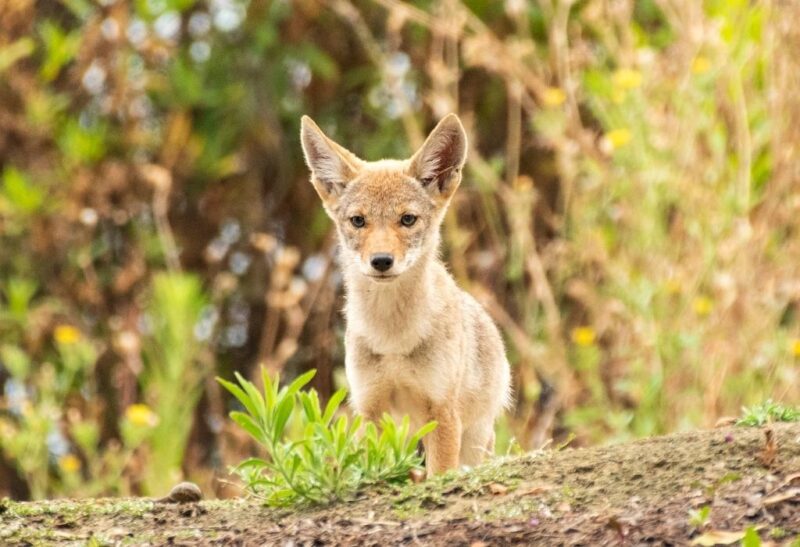A baby coyote is taught how to hunt and survive in the wild by their parents or other adult members of the pack. They spend much of their time hunting small animals, including mice, voles, rabbits, and birds. They also eat insects that they find in the grass and water.
Baby coyotes are the cubs of adult coyotes. The young coyotes stay with their mothers until they are about three months old. At this time, the mothers teach them how to hunt for food.
The young coyotes play together during this time and learn how to avoid other animals in their territory.
Table of Contents
What Do Baby Coyotes Look Like? | Coyote Baby Pictures
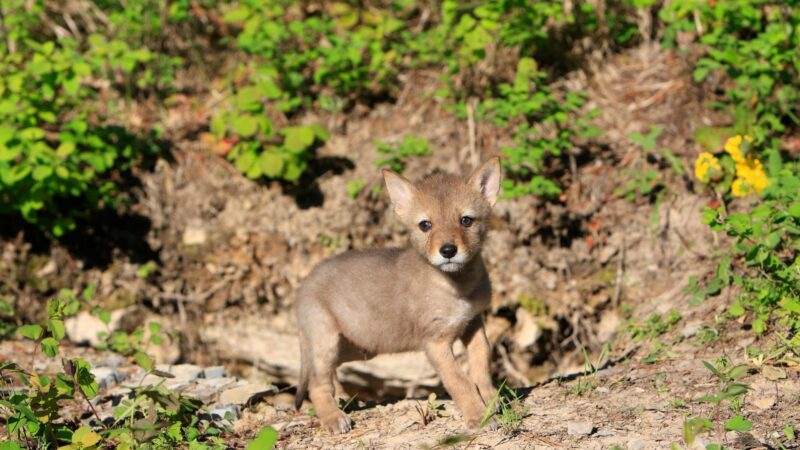
Baby coyotes are small, furry animals about the size of a house cat. They have long tails and tails that drag along the ground when they walk. They have large ears that stand up straight off their heads, and their eyes are set in a squinty-like way. Their nose is small, just like a puppy’s nose would be.
Baby coyotes look very similar to young dogs because they both have a lot of furs and both have long tails. But there are some differences between them. Baby coyotes don’t have any teeth, yet dogs do. Moreover, baby coyotes are born with red eyes, while dogs’ eyes turn blue very soon after birth (but not always).
What Is a Baby Coyote Called?
Coyote babies are known as pups, and a litter refers to a group of pups. They are born with the same fluffy fur that adults have, and they weigh about 1 pound at birth. At this age, they’re just starting to develop their coats and grow their first set of teeth.
How Long Does It Take for the Coyote Pups to Be Born and to Live Alone?
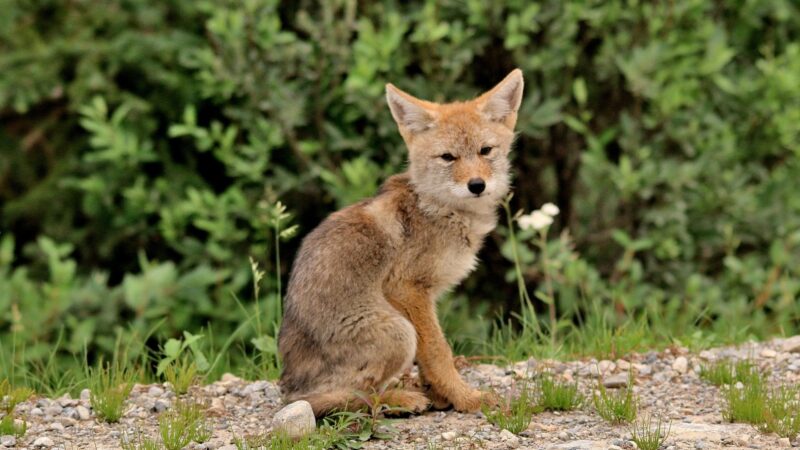
The coyote pups will be born and come into their own as early as 1-2 weeks of age. They will leave the den soon after, though it can take them up to three weeks to find food on their own.
The first week is essential for the coyote pups to learn how to survive without their mother, but they are still able to get by without her for at least one month. The coyote pup’s eyes won’t open until ten days have passed.
After about six months, they will leave their mother’s home, then begin searching for a territory of their own. The coyote pups will eventually be able to survive on their own and can move around without help from their parents or other coyotes. This process can take up to two years, depending on where they live.
The young coyotes will wander through different areas of the forest looking for places they feel safe enough to live and raise their kits. However, if there are other coyotes nearby who are already breeding or raising pups, it may take less time than this because these older animals will teach their young how to hunt and protect themselves before moving off on their own.
Can You Keep a Baby Coyote as a Pet?
While it is possible to keep a coyote as a pet, it is not recommended. Coyotes are wild animals, and they can become aggressive if they feel threatened or cornered. They are also very territorial, so keeping one as a pet is likely to cause problems in your household.
Coyotes are relatively aggressive animals. They are also constantly on the move, making them especially difficult for their owners to keep track of—it’s not uncommon for them to escape.
Can You Tame a Baby Coyote?
The coyote is a wild animal and cannot be tamed. Coyotes are not domesticated in any way and do not respond to human contact or training. They will only respond to their instincts, which include hunting, mating, and defending territory.
It has been domesticated for hundreds of years, and yet it still retains some of its wild instincts. This means that it will not respond favorably to attempts at being tamed.
Are Baby Coyotes Dangerous?
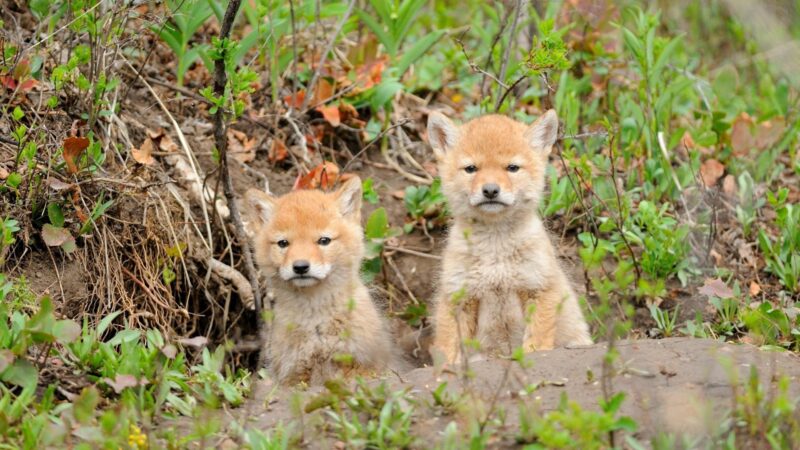
While it’s true that young coyotes can be quite cute, they are still wild animals and can pose a threat to humans. Young coyotes are prey animals and rely on their parents for food, protection, and hunting skills. They will often bite and injure people who try to pick them up or hold them.
Because they’re so young, they have not yet developed the instinct to avoid humans. As a result, they may approach you in an unthreatening way, but this can often be misinterpreted as a sign of aggression and lead to a bite or other injury.
What Does a Baby Coyote Sound Like?
Baby coyotes are a lot like full-grown coyotes. They sound similar to them, and they have similar body language. Baby coyotes will have the same growl as full-grown coyotes, but they’ll also have a different snort.
Baby coyotes snort when they’re excited or scared. So if you hear a baby coyote cry or snort, you can be sure that it’s something to worry about!
A baby coyote’s cry is often described as “a high-pitched, wailing sound.” This can be heard from a distance of about 100 feet. A baby coyote’s cry is usually heard during the night, but it may be heard during the day.
What Are the Meanings of Coyote Noises?
The term coyote sounds come from the animal’s cry, which is a high-pitched howl that sounds like a child imitating an animal. Coyotes are known to howl at night to communicate with each other and with other animals in their territory.
The meaning of coyote noises varies depending on the situation. They can be used as a warning or as a way to notify others of danger. They also act as a way for coyotes to express their emotions and feelings toward one another.
The sound of coyotes can be heard at night or during the day, but it’s most common after dark when they’re communicating with each other about what they should do next. When there is danger nearby, this howling is an important tool for warning others so that they can take action before it’s too late.
What to Feed a Baby Coyote?
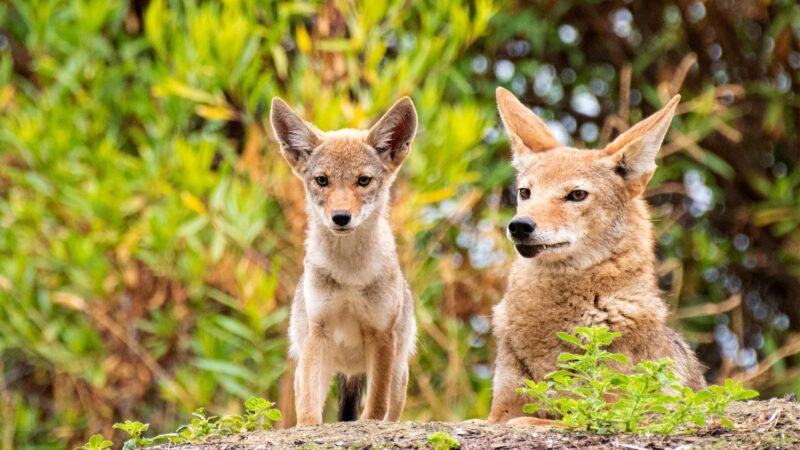
Coyote babies need to be fed milk as soon as possible. During the first weeks of their birth, baby coyotes depend on their mother’s milk for nourishment as they are still untrained to prey on other animals.
What to Do if You Find a Baby Coyote?
If you find a baby coyote, keep it safe and don’t touch it. You mustn’t try to handle the animal because several diseases can be passed from animals to humans, including rabies and distemper.
If possible, reach out to your local wildlife center or a wildlife rehabilitator for advice on what to do with the animal. These organizations have the knowledge and experience necessary to care for these animals until they are old enough for release back into the wild. They will also be able to provide any medication needed to help prevent illness in the coyote until it’s time for release back into the wild.
How Much Do Baby Coyotes Weigh?
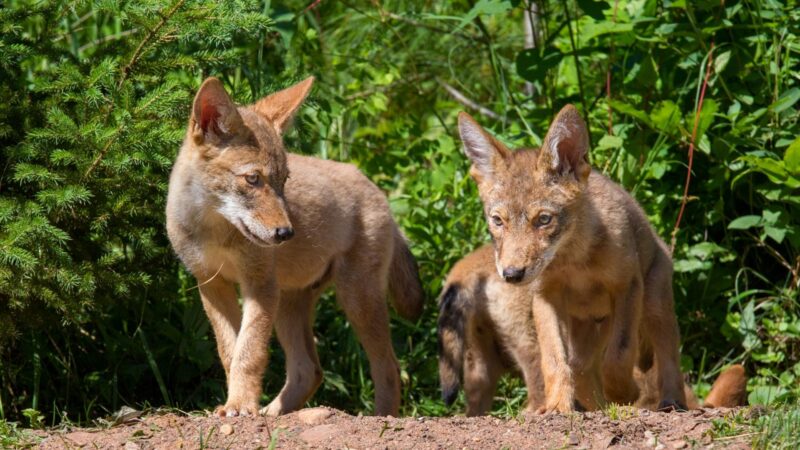
When it comes to weight, pups are born with about 1/3 of their adult weight. The average weight for a healthy coyote pup is approximately ½ pound.
As they grow, a coyote pup’s weight will vary depending on the time of year and how many other coyotes they’re around. They can weigh anywhere from 1/2 pounds (at birth) to 20 pounds or more as adults in their first year alone.
Baby Coyote Names
Here are some cute baby coyote names that you can use:
- Munchkin
- Killer Coyote
- Zorro Coyote
- Maverick Coyote
- Molly
- Lola
- Chi Chi
- Luna
- Badass
- Baker’s Dozen
- Bandit
- Bastet
- Furry
- Buddy
- Mimi
- Teddy
- Rufus
- Little Fox
- Kip
- Butter
How to Take Care of a Baby Coyote?
Coyotes are wild animals, and they are not meant to be domesticated. If you want to keep them as pets, they deserve the same respect they would give the rest of nature.
They need space and plenty of food, and an area where all their members can live together without fear of being disturbed. In an instance that you find yourself domesticating one, here are some ways to take care of baby coyotes:
- Feed the baby coyote enough milk. Coyotes do not have regular digestive systems like other dogs do. So you mustn’t feed a baby coyote a slice of meat or similar food that they can’t easily digest. Make sure as well that it has access to water at all times.
- Keep their cage clean and dry. If he is allowed outside, make sure their cage is kept clean and dry at all times because coyotes get very sick if they are kept in wet conditions without proper ventilation or airflow.
- Make sure that they have plenty of space to run around in their cage. Coyotes are very active animals who need lots of room to play with their friends or explore new areas around their house.
- Don’t let other pets near your coyote. Coyotes are wild animals who can be dangerous if they feel threatened by other animals or humans nearby; you should never allow other pets near your pet unless necessary
Most people agree that it’s important to show love and appreciation to our pets and animals in general, and some have been thinking of domesticating certain wild animals, like coyotes. One thing most people don’t realize when they adopt a baby coyote is that, although the animal is probably very friendly, it can be difficult for them to trust strangers.
List of Sources
Coyote. (2009). Connecticut – Department of Energy and Environmental Protection.
Coyote. Maine Department of Inland Fisheries & Wildlife.
Coyote FAQ. Wildlife NYC.
Coyotes, Canis latrans. Tennessee Wildlife Resources Agency.
